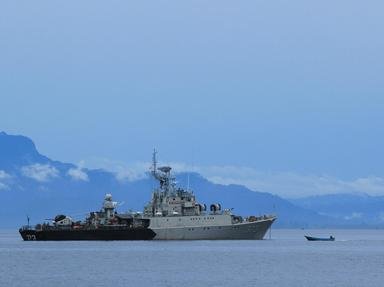Quiz Answer Key and Fun Facts
1. When was the new British Pacific Fleet founded?
2. What was the basic capital ship (fleet aircraft carriers, battleships, and battlecruisers) composition of the British Pacific Fleet?
3. In addition to the fleet carriers, there were also light and escort carriers in the force. How many of these ships were in the fleet?
4. Two of the light carriers, "Pioneer" and "Unicorn", were a design unique to the British Royal Navy. What set them apart from the other light carriers in the fleet?
5. Aside from the carriers and battleships in the fleet, there were numerous support vessels, such as cruisers, destroyers, frigates, sloops, corvettes, and submarines, as well as maintenance ships. How many other countries contributed ships or sailors to the fleet?
6. Where was the first offensive action taken by the fleet after it was formed?
7. What were the main differences between the British and American aircraft carriers in the Pacific Theater?
8. While the British Pacific Fleet operated mostly British built planes, they also used some American aircraft. What was the most numerous American fighter aircraft used by the British in the Pacific?
9. What were the task force designations of the British Pacific Fleet when it operated as part of the American 5th and 3rd fleets?
10. While Admiral Bruce Fraser was the overall commander of the British Pacific Fleet, he remained at headquarters in Sydney. Who was the operational commander of the fleet?
Source: Author
Reamar42
This quiz was reviewed by FunTrivia editor
ponycargirl before going online.
Any errors found in FunTrivia content are routinely corrected through our feedback system.
